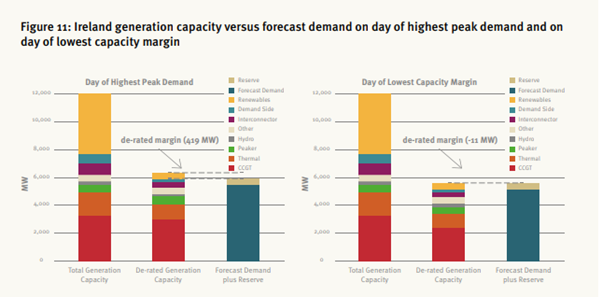News
better business decisions
Posted 3 years ago | 4 minute read

CRU unveils limits on data centre usage amid supply worries
Ireland’s Commission for Regulation of Utilities (CRU) has announced that, while it would not issue an outright ban on data centres connecting to the power grid, new measures would be put in place to curb data centre energy usage.
The combined power capacity of data centres in Ireland is estimated at 642MW, but with another 41 centres either already under construction or at the planning stages, the total energy consumption could increase by an additional 830MW in the coming years. EirGrid estimates that by 2028, data centres could account for 29% of demand in Ireland.
In light of this, in June CRU set out plans to change the way grid connection of data centres are processed. Under the initial proposals, the system operators would be required to prioritise applications from data centres that can generate enough energy to support their electricity demand, can be flexible in reducing their consumption at times of system constraint, or are built in locations where power networks are not constrained.
Informed by recommendations put forward in its June consultation, CRU published its decision on data centre connection policy on 23 November, stating how connection applications will now include assessment criteria encompassing location and the ability to contribute to the security of supply.
Specifically, the CRU will assess:
- The location of the data centre applicant with respect to whether they are within a constrained or unconstrained region of the electricity system.
- The ability of the data centre applicant to bring onsite dispatchable generation (and/or storage) equivalent to or greater than their demand, which meets appropriate availability and other technical requirements as may be specified by the relevant system operator (SO), in order to support the security of supply.
- The ability of the data centre applicant to provide flexibility in their demand by reducing consumption when requested to do so by the relevant SO in times of system constraint through the use of dispatchable on-site generation (and/or storage) which meets appropriate availability and other technical requirements as may be specified by the relevant SO, in order to support the security of supply.
- The ability of the data centre applicant to provide flexibility in their demand by reducing consumption when requested to do so by the relevant SO, in times of system constraint, in order to support the security of supply.
The new rules come as the SO warns of a challenging winter ahead for the grid. In September, EirGrid warned that Ireland could face deficits in electricity for the upcoming five winters. The All-Island Generation Capacity Statement (GSC) noted that low power plant availability for this year continues to be a concern with an expectation that the coming winter period will be challenging if no action is taken.
In the Winter Outlook Report, published in October, EirGrid noted that the Loss of Load Expectation (LOLE) in Ireland for the five months of the winter period was 17.4 hours. This is outside the 8-hours per year standard meaning the system will operate at a higher level of risk than is set by the CRU.
The minimum de-rated margin over the winter period is expected to be in the range of -144 MW to 93 MW. There is an expectation that the system will enter the Alert State at times, most likely at periods of low wind and interconnection.

Mark Davis, GridBeyond’s Managing Director UK & Ireland said:
“It is good news that the CRU has highlighted the potential for data centres to self-generate required energy and to offer flexibility services to the grid. Given their load requirements, siting data centres closer to, or co-locating with sources of power generation could not only speed up the connection process but provide a long-term revenue stream for the business.”







